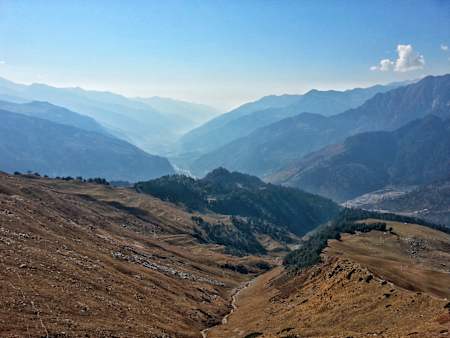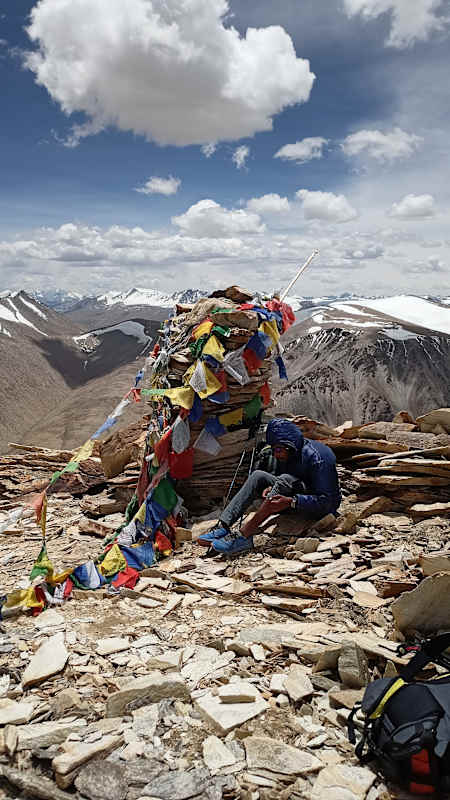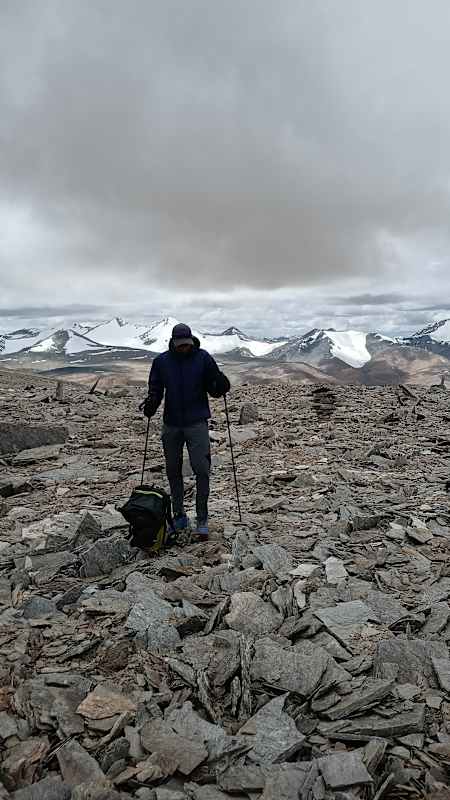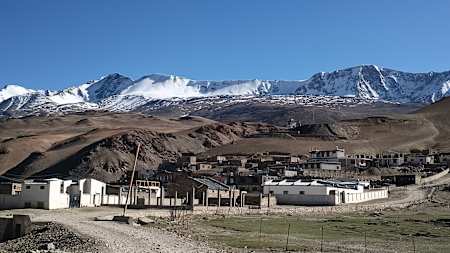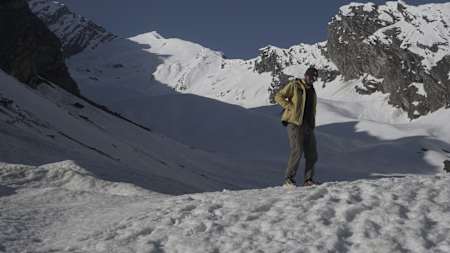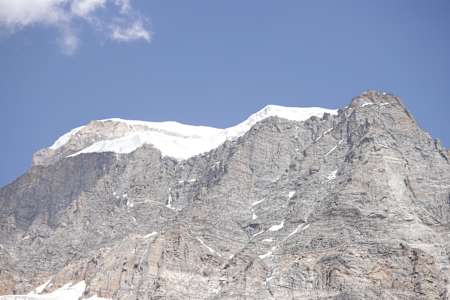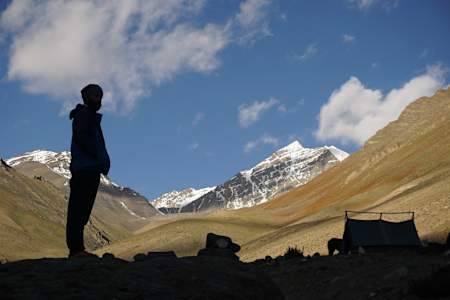
28 min
Fastest Known Time
Follow Indian ultrarunner Kieren D’Souza as he sets the fastest known time for traversing Mt Deo Tibba.
The Himalayas have the most challenging and aspired-to-climb peaks in the world.
As far as mountaineering goes, there is something for everyone. The climbing grade of the mountains in the Himalayas depending on several technicalities. At times you can find 6,000-metre peaks which are easier treks than technical 5,000-metre climbs.
The technical aspects include exposure, crevasses, glacier climbing, rock climbing, etc. and accordingly can need skills with equipment like ice axe, ropes, crampons, rock wall, ice wall, etc. If you are going to be climbing in the Himalayas, be sure that you are trained in mountaineering and not taking anything for granted.
Kieren D’souza is an ultra-runner and mountaineer who lives in Manali, Himachal Pradesh. He trains in the neighbouring valleys and attempts several personal projects in the mountains. In October 2020, Kieren completed the Fastest Known Time on the 6,001-metre Mount Deo Tibba in the Pir Panjal Range. In June 2021, he successfully scaled 10 peaks of 6,000 metres each in 26 days in Ladakh. He is very familiar with the Himalayan Mountains.
Here Kieren lists out Himalayan peaks in India in increasing grade of difficulty which – from his personal experience and research – are perfecting starting peaks for mountaineering beginners.
01
Mount Patalsu
- Location: Solang, Himachal Pradesh
- Peak: 4,200 meters above sea level
- Climbing season: May-June, October-November
Need to know: This peak is fairly easy. It requires little fitness and no technical knowledge. There is a little exposure at the top 20 meters of altitude, but not fear-inducing. It is mostly a day’s hike and the distance to the top from Solang village is about 9kms.
Kieren says: “You get a beautiful view of the Kullu Valley from the top and a sneak peek into the Lahaul valley. It is a modest trekking peak that could act as a training peak. It is easily accessible and doesn’t require any acclimatization.”
02
Mount Yunam
- Location: Bharatpur, Manali-Leh Highway
- Peak: 6,111 meters above sea level
- Climbing season: July to September
Need to know: This is an impressive 6,000+ metre peak that mostly requires good trekking skills. It needs proper acclimatization though since base camp is around 4,500 metres above sea level. Also beware of the unpredictable weather. Mount Yunam is full of scree and loose stones, so you will need to be very attentive on the terrain.
Kieren says: “The wind chill is quite high on Mount Yunam. My tip would be to carry a rain jacket that could also act as a windproof jacket. Leave around 2-3am from the base camp so that you can return by noon, after which the weather generally gets bad on the summit.”
03
Mount Kiagar Ri
- Location: 12km north of Karzok, Ladakh
- Peak: 6,105 meters above sea level
- Climbing season: July to September
Need to know: This peak is usually a one-day summit, however people do tend to camp about 400 meters below summit if needed. This mountain has a lot of scree so you will need shoes with good grip and will need to move slowly. Acclimatization is also necessary. The air is dry so hydration also becomes very important. It is a non-technical peak.
Kieren says: “Do not be fooled by this easy-looking peak. It seems quite easy but the summit is far and mentally challenging. It is about 6km from the road head to the top and about 1,350 meters of elevation gain. The view from the top is mesmerizing.”
04
Mount Yalung Nong South
- Location: Karzok, Ladakh
- Peak: 6,080 meters above sea level
- Climbing season: July to September
Need to know: Probably one of the easiest 6,000+ meter peaks in the Himalayas. It has a huge dome-shaped peak which gets a lot of high-speed wind because of exposure. However, the climb doesn’t pose much technical difficulties. Acclimatization is necessary for this peak. From base to summit is roughly a 7.8-km trek with a 1,150-meter elevation gain in total.
Kieren says: “It has an almost 1-km flat-ish field to the highest point of the peak, with just about 50 meters of elevation gain. It was the easiest of the 10 peaks I did during my project.”
05
Mount Mentok Kangri 2
- Location: Karzok, Ladakh
- Peak: 6,150 meters above sea level
- Climbing season: July to September
Need to know: The trek to the peak starts from Karzok village, at an altitude of 4,585 meters; this is a good place to acclimatize. The last 300 metres of the climb require snow boots and crampons. A melting glacier creates clean water pools at 5,300 meters, which is a good point to camp. The weather becomes harsh in winter so it is advisable to stick to the climbing season. Carry a windproof jacket for this trek.
Kieren says: “I attempted a different route on Mount Mentok Kangri 2 during my project. I got stuck at the end, near the top. I then had to traverse to the traditional route for the summit. The traditional route is quite easy and requires no technical skills. My tip would be to enjoy the stunning views of Lake Tso Moriri while going for the summit.”
06
Mount Kang Yatse 2
- Location: Markha Valley, Ladakh
- Peak: 6,270 meters above sea level
- Climbing season: July-August
Need to know: This peak is for serious trekkers and mountaineers. It is an imposing peak at the end of the Markha Valley. Acclimatization is absolutely necessary. The temperature drops below zero, wind speed is high, and there is snow at the top, so prepare your gear accordingly.
Kieren says: “Mount Kang Yatse 2 was in the plan for my project. I didn’t do it because of the travel it would have involved. But in my research, I found out that it is a trekking peak for reasonably fit people and requires semi-technical experience. I would love to go for this peak because of the beautiful valley it is situated in and the extraordinary views of the Zanskar valley from the summit.”
07
Mount Friendship Peak
- Location: Solang Valley, Himachal Pradesh
- Peak: 5,289 meters above sea level
- Climbing season: May-June (snow-covered), October-November (predominantly rocky)
Need to know: It is a perfect peak for those who want to advance their trekking skills. It is very easily accessible from the road. Despite the lower altitude, this peak is tough since it requires semi-technical skills and acumen for mountaineering. This mountain features glacial traverse, freezing water conditions, alpine lush green meadows, shin-deep snow, and moraines.
Kieren says: “I did a successful speed ascent on this peak on 16th June 2020. I switched from shoes to mountaineering boots and crampons while approaching the summit from the col. It gets slightly steep at the top but nothing that requires high mountaineering skills.”
08
Mount Deo Tibba
- Location: Manali, Himachal Pradesh
- Peak: 6,001 meters above sea level
- Climbing season: May-June, September-October
Need to know: This peak is a true taste of mountaineering with every kind of challenge and technical skill. It requires prior high-altitude experience and knowledge about equipment usage. This mountain features crevasses, ice gully, rock gully, steep summit shoulder, and glacial traverse. Fixed ropes, crampons and ice-axes are required.
Kieren says: “I attempted an ambitious Fastest Known Time on Mt. Deo Tibba on 1st October 2020. I had to plan in advance and did a lot of recces. I did it an alpine way but an aspiring mountaineer can set various camps in between. It is a really good option for those who want to advance their mountaineering skills.”
09
Mount Stok Kangri
- Location: Stok Village, Ladakh
- Peak: 6,153 meters above sea level
- Climbing season: July-August
Need to know: Mount Stok Kangri is banned for climbing from 2020 to 2023. It is the highest easily-accessible trekking peak in India. This is probably the last peak manageable for beginner mountaineers; all higher peaks with tougher grades require serious mountaineering skills. You should be very fit and well acclimatized for this peak. Base camp is usually set up around 5,000 meters altitude. The wind speed is quite high on the peak and temperatures drop below zero.
Kieren says: “I have been planning an FKT on this peak for a long time. It’s good that it was banned due to the exploitation it endured from gazillions of footfalls during the season. Let’s see what decision is made for the peak post-2023.”



